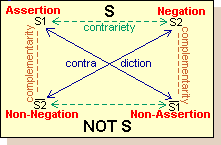Francis Heylighen on the Emerging Global Brain
Also GTD :Affordance, effieciency etc
* Could be implemented explored via
http://nltk.googlecode.com/svn/trunk/doc/book/ch05.html
The foundation of this work: ideally a safe, peaceful transition to safe peaceful spaces for all, as informed and enabled by the wholeness, the coordination of things, the natural and intellectual capacities of all beings, acting safely for all.
"Dialogue is mutual search for a new reality, not debate to win with stronger arguments. In a dialogue propositions are pointers toward a common new reality; not against each other to win a verbal battle, but complementing each other in an effort to accommodate legitimate goals of all parties, inspired by theories and values, and constructive-creative-concrete enough to become a causa finalis". Galtuung
"I use the concept of affect as away of talking about a margin of manouverability, the 'where we might be able to go' and 'what we might be able to do' in every present situation. I guess 'affect' is a word I use for 'hope': Massumi
"A discourse is a system of words, actions, rules, beliefs, and institutions that share common values. Particular discourses sustain particular worldviews. We might even think of a discourse as a worldview in action. Discourses tend to be invisible--taken for granted as part of the fabric of reality."Fairclough
Emergence is “the principle that entities exhibit properties which are meaningful only when attributed to the whole, not to its parts.” Checkland
"What the designer cares about is whether the user perceives that some action is possible (or in the case of perceived non-affordances, not possible)." Norman
 The structuralist semiotician Algirdas Greimas introduced the semiotic square (which he adapted from the 'logical square' of scholastic philosophy) as a means of analysing paired concepts more fully (Greimas 1987, xiv, 49). The semiotic square is intended to map the logical conjunctions and disjunctions relating key semantic features in a text. Fredric Jameson notes that 'the entire mechanism... is capable of generating at least ten conceivable positions out of a rudimentary binary opposition' (in Greimas 1987, xiv). Whilst this suggests that the possibilities for signification in a semiotic system are richer than the either/or of binary logic, but that they are nevertheless subject to 'semiotic constraints' - 'deep structures' providing basic axes of signification.
The structuralist semiotician Algirdas Greimas introduced the semiotic square (which he adapted from the 'logical square' of scholastic philosophy) as a means of analysing paired concepts more fully (Greimas 1987, xiv, 49). The semiotic square is intended to map the logical conjunctions and disjunctions relating key semantic features in a text. Fredric Jameson notes that 'the entire mechanism... is capable of generating at least ten conceivable positions out of a rudimentary binary opposition' (in Greimas 1987, xiv). Whilst this suggests that the possibilities for signification in a semiotic system are richer than the either/or of binary logic, but that they are nevertheless subject to 'semiotic constraints' - 'deep structures' providing basic axes of signification.